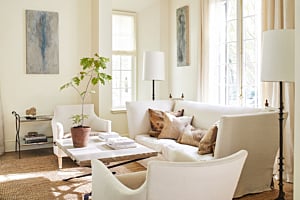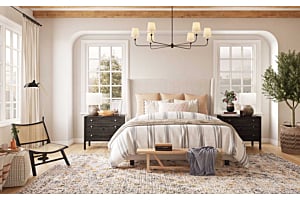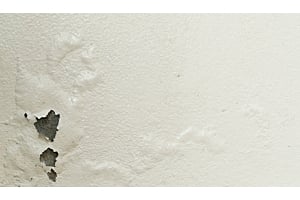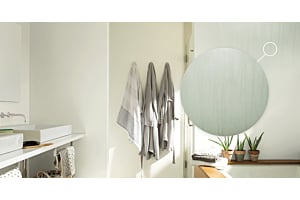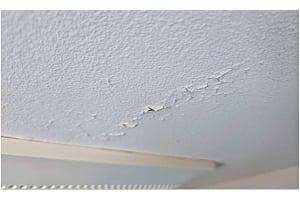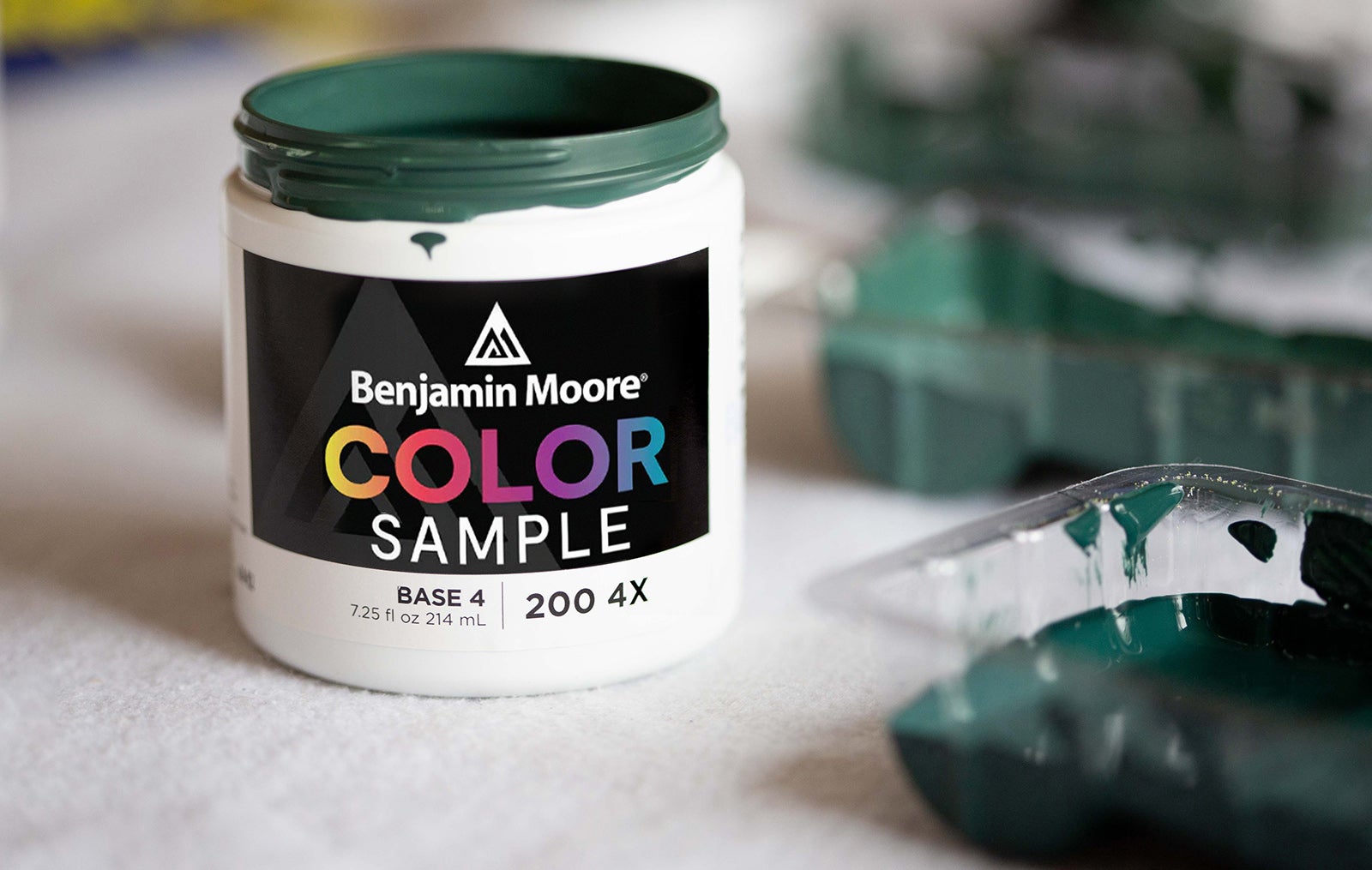
Choosing a paint color is one of those interior design tasks that seems simple. You stop by your local paint store and pick up a few paint swatches, bring them home and pick one. Often this works out, but sometimes you end up with a color scheme that’s not quite right throughout the house. Paint chips are simply too small to get a sense of a color’s undertones or how dark it will be when it covers an entire wall.
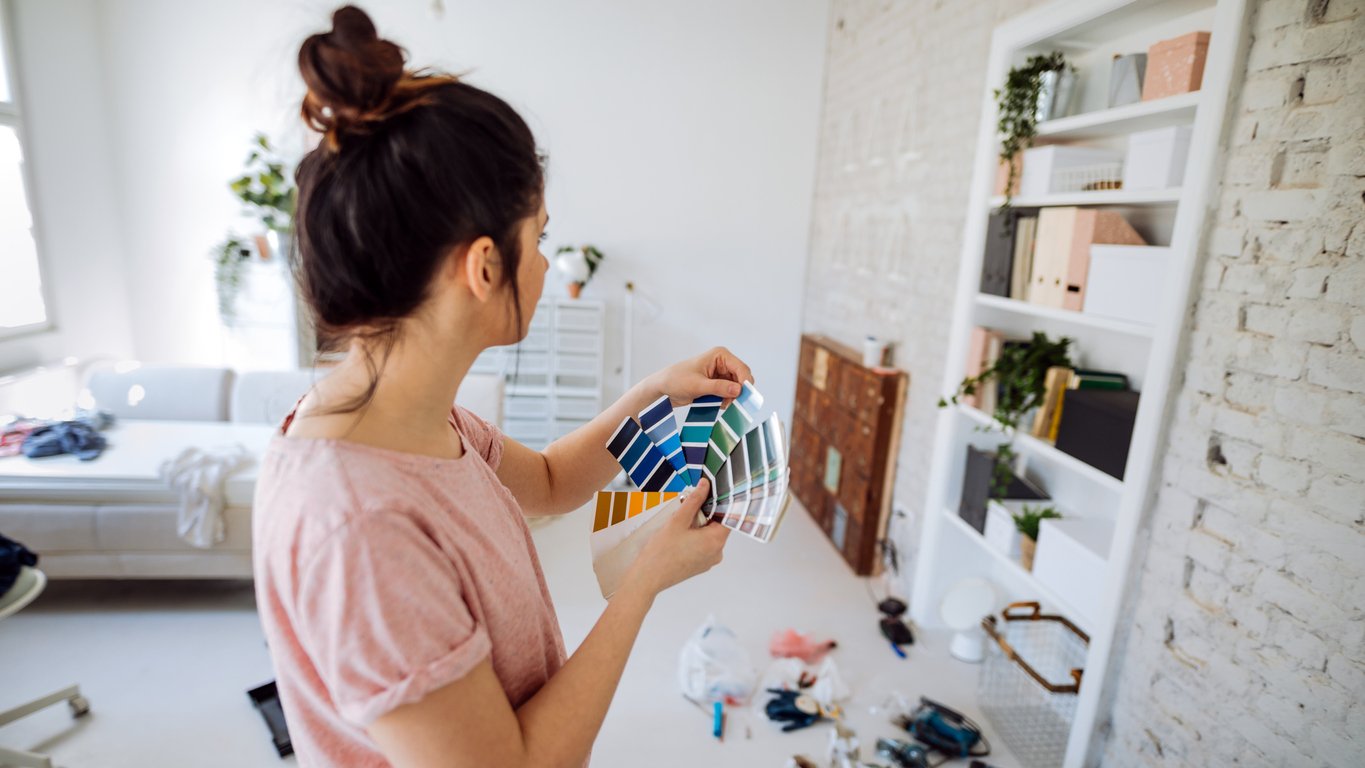
Some people buy sample size cans and paint samples of the color directly on the walls, but this method has its own drawbacks.
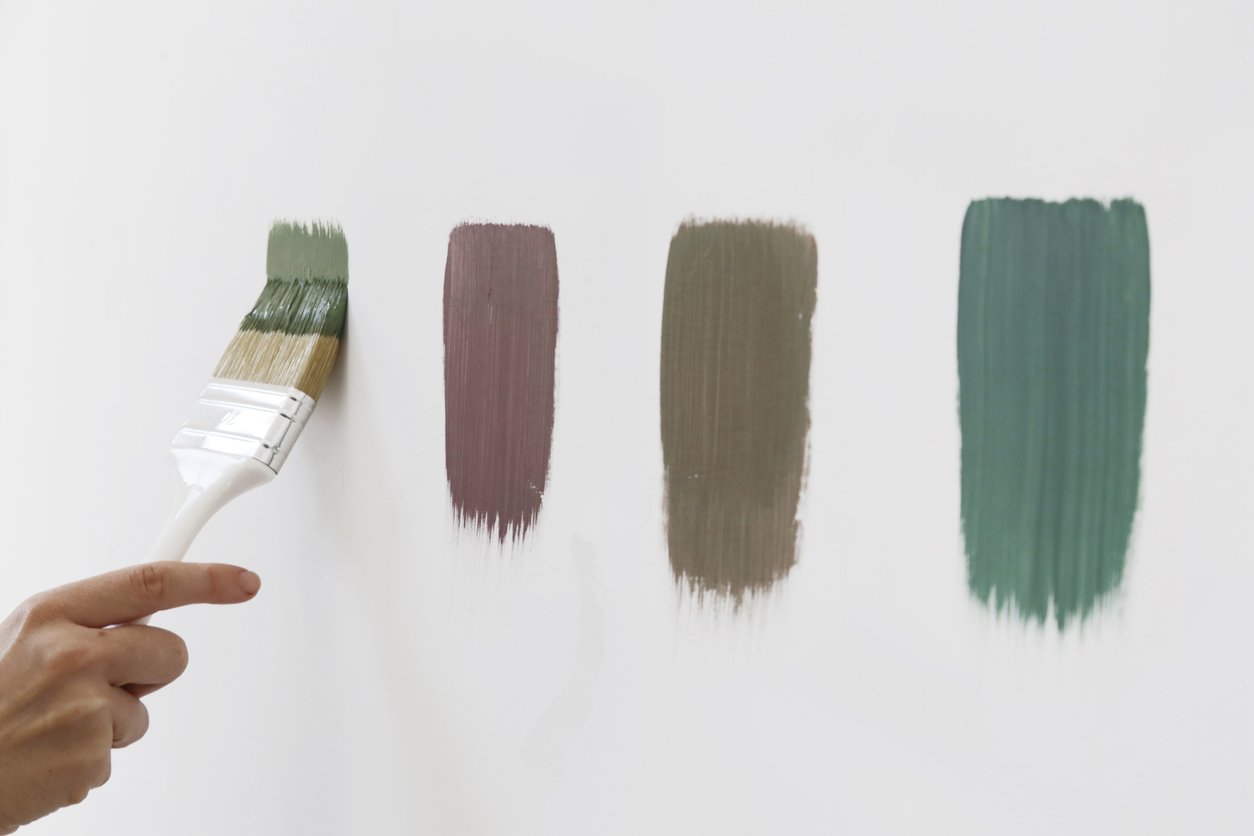
Why is it a bad idea to test a wall paint color directly on the walls?
- The existing wall color can create optical illusions that make it challenging to judge how the color will read once the entire wall is painted. Colors will appear lighter against a dark wall, and darker against a light wall.
- Color appearance can change from wall to wall depending on its positioning to windows and interior lighting. Additional swatches have to be painted for every space in the room that the color needs to be tested on.
- If the project gets delayed, the swatches leave an unsightly patchwork of paint around the room.
- A good paint swatch should have two full coats to give an accurate view of the color, so painting on the wall creates more prep work. Swatched areas will need sanding and perhaps even a primer coat before the final painting project so the extra coats don’t show through.
Interior Designers’ Best Way to Test Paint Samples
So, what’s the ideal way to test a paint sample? We think interior designers do it best – they create movable swatches of actual paint that show how interior paint colors change according to the lighting and time of day.
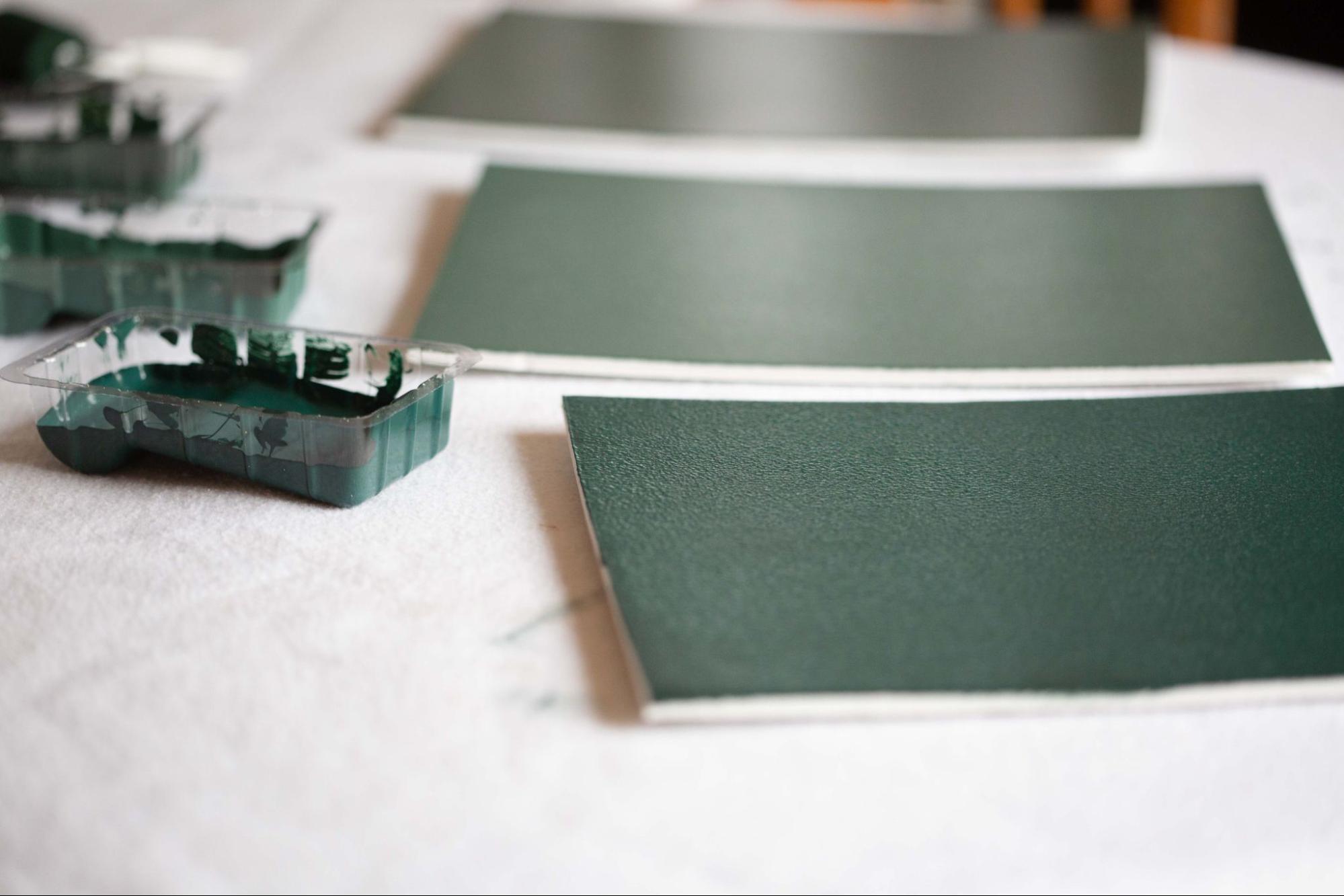
These movable paint samples avoid the inconvenience of messy paint swatches; they make it easy to try the paint color in different parts of a room to see how it changes in natural light. Here’s how you can easily make your own DIY paint samples at home!
Step 1: Gather Paint Sampling Supplies
- Foam core poster board (one or two pieces for each paint color) – Foam board is the best choice for large paint swatches because it’s stiff, so you can lean it against the wall or atop a piece of furniture.
- Disposable foam brushes and rollers -We recommend foam rollers over brushes because they will provide the smoothest coverage and closest simulation to how the paint appears on the wall.
- Sample size jar of each paint color – Opt for 2-4 paint colors to give you the best range of undertones.

For a recent living room accent wall project we chose three shades of dark green to test out: Essex Green, Tarrytown Green, and Salamander, all Benjamin Moore paint colors.
Then we used small foam rollers from our Paint Sampling Kit to paint three foam boards, one in each color. We applied two coats of paint to each, and let them cure for 24 hours to have an accurate representation of the color.
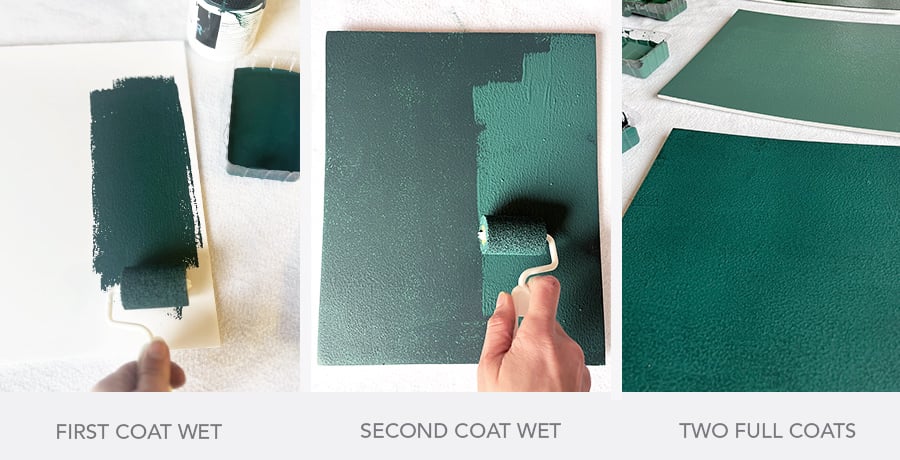
Step 2: Test Color Swatches In Different Locations Throughout the Day
Once our paint sample boards were dried and cured, we moved them around the house and compared them in various conditions.
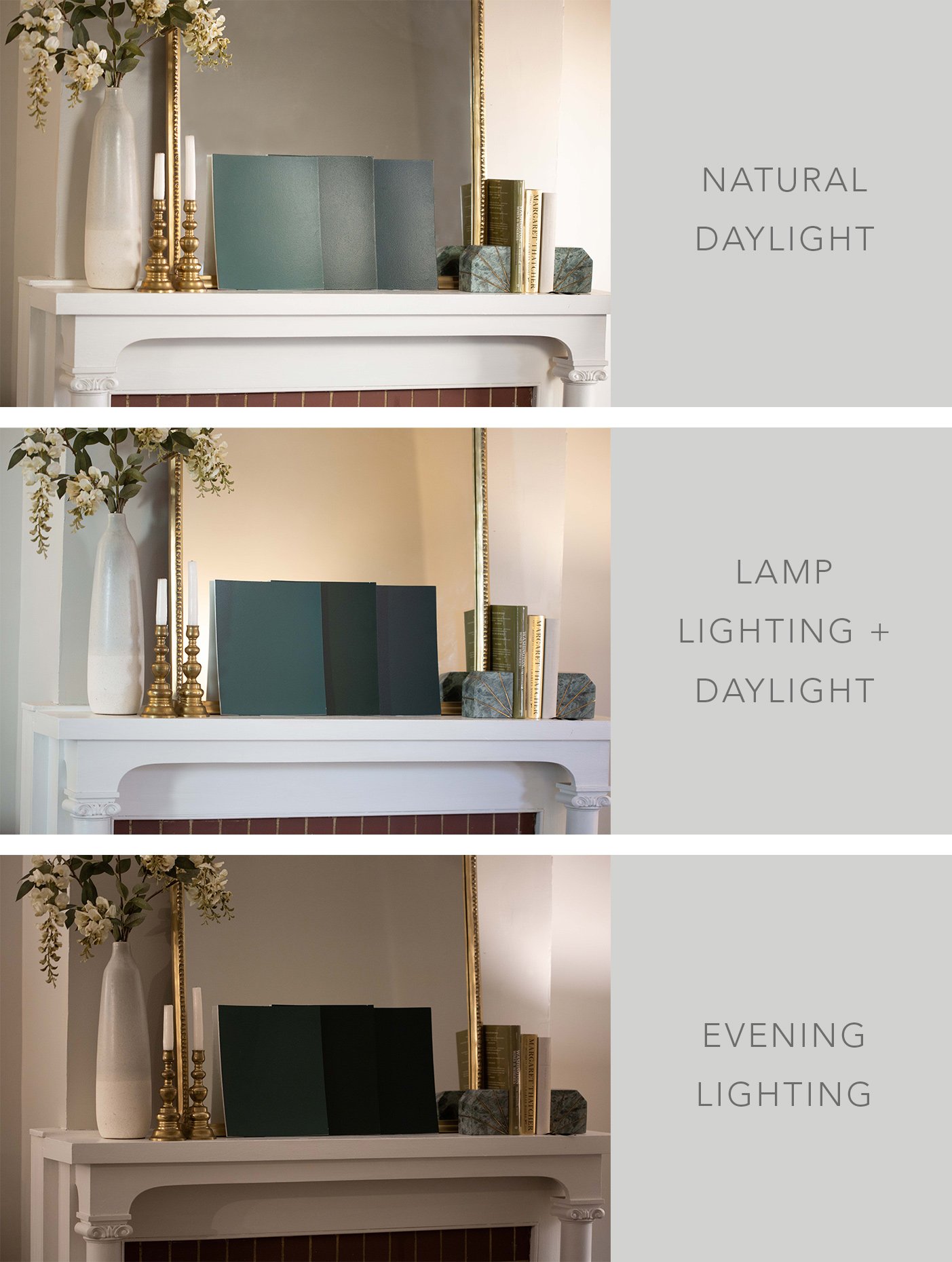
Large, movable color samples make it easy to see how paint color looks in different areas and under different lighting. Here are a few scenarios you may want to observe:
- Near a window with bright natural light
- Near a lamp for artificial light
- In a dark corner
- Atop a piece of furniture or against textiles in the room
- In the brightest part of the day with the most natural light
- In the evening with no natural light
- Next to trim
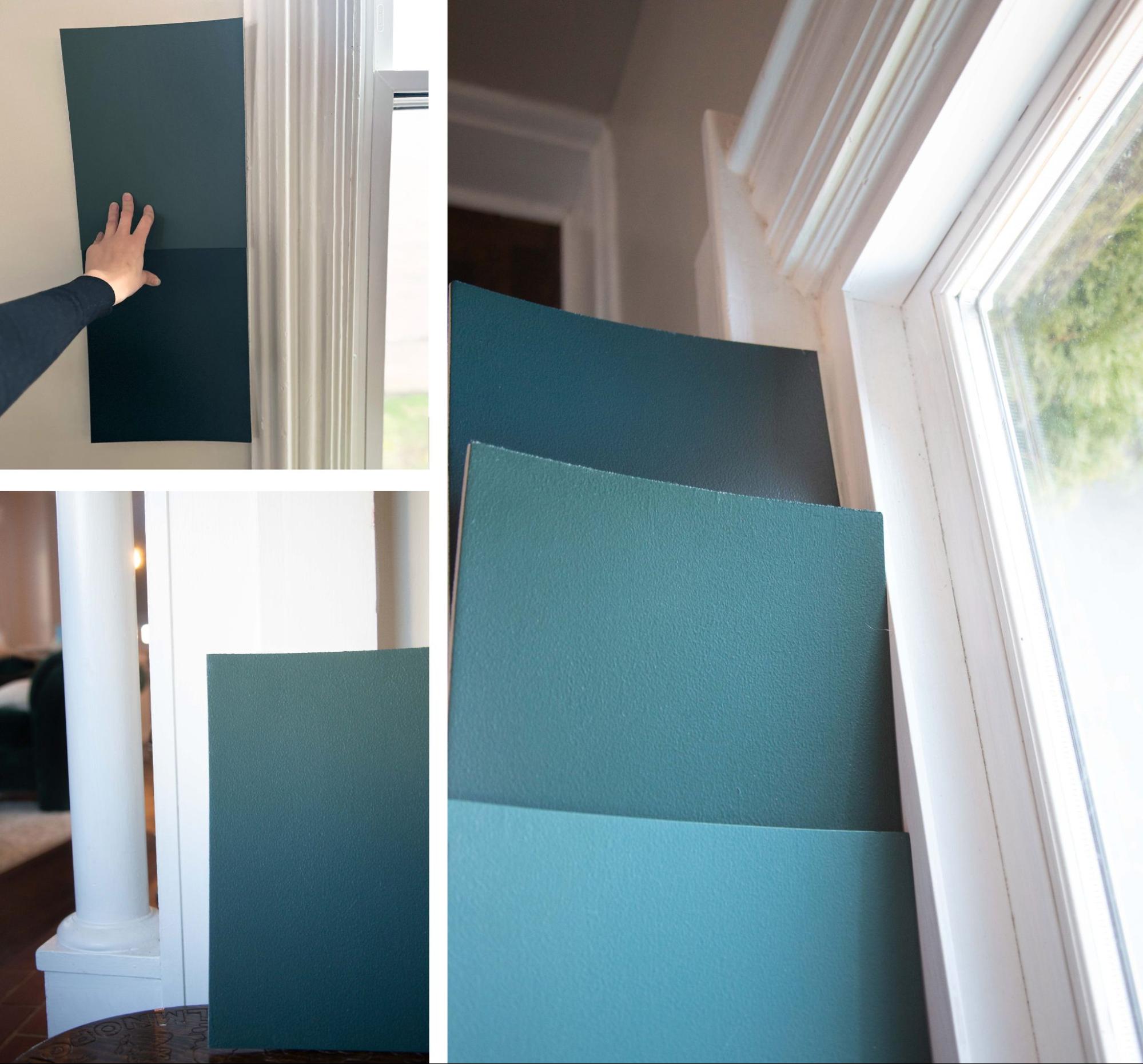
If you’re not repainting the trim, test the colors directly next to the woodwork; and if you are, make sure you test one or two trim colors as well. Leave the samples in place for a few days and observe how the colors change, and how they look from adjoining rooms.
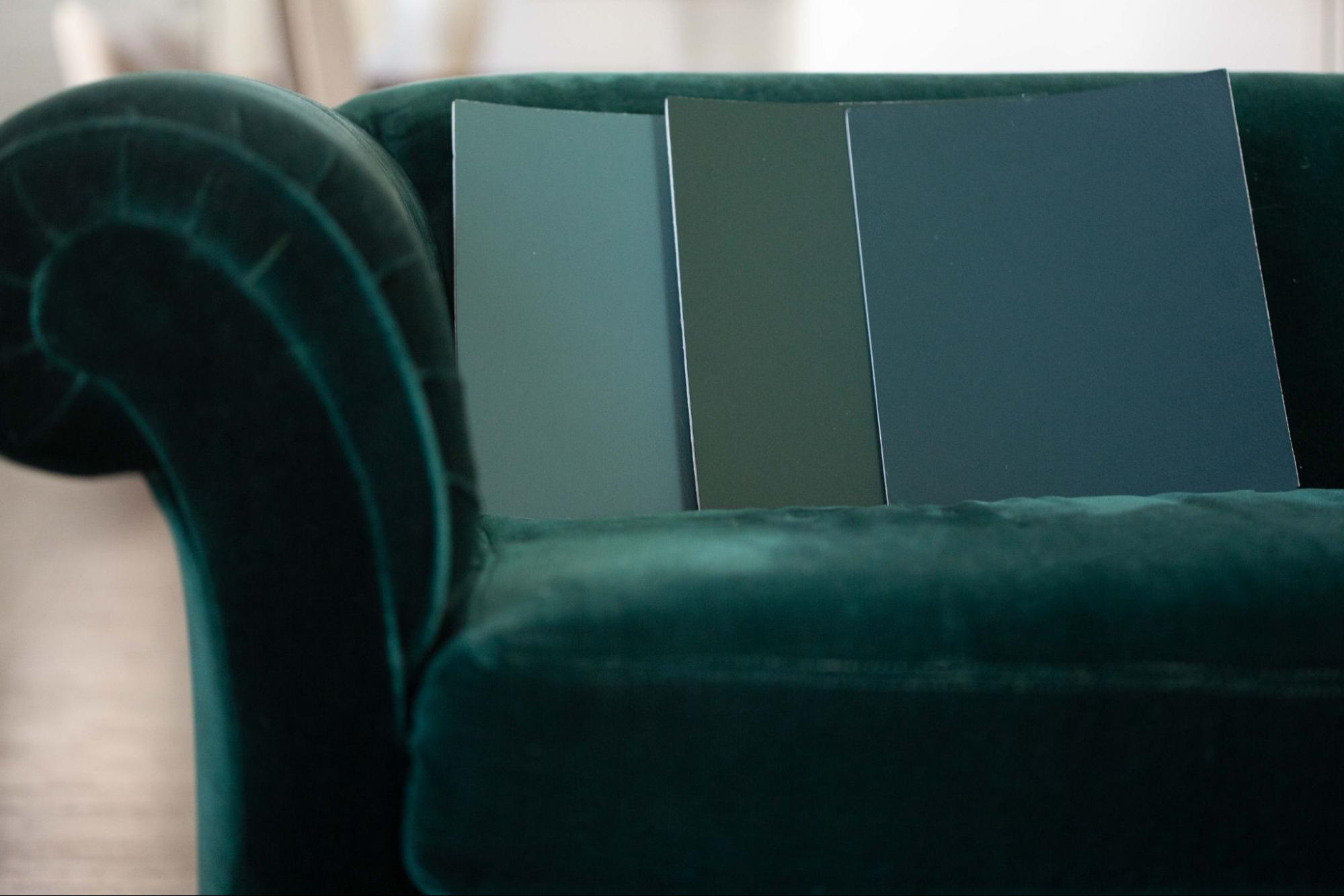
Step 3. Pick the Best Paint Color
After a few days of looking at your paint colors, a clear winner should emerge. If you’re still unsure, the colors you are testing may not have the right undertones, and you could try testing a couple of additional shades. Testing only a few colors at a time takes longer, but it is far less confusing!
Fortunately for our accent wall project, the sample colors were close to what the clients were looking for. Sampling large swatches in their living room made it easy to see which shade worked best with their green velvet sofa and the cool white of the fireplace. They decided on Tarrytown Green in Benjamin Moore’s Regal Select Interior Paint with a family-friendly Satin finish.
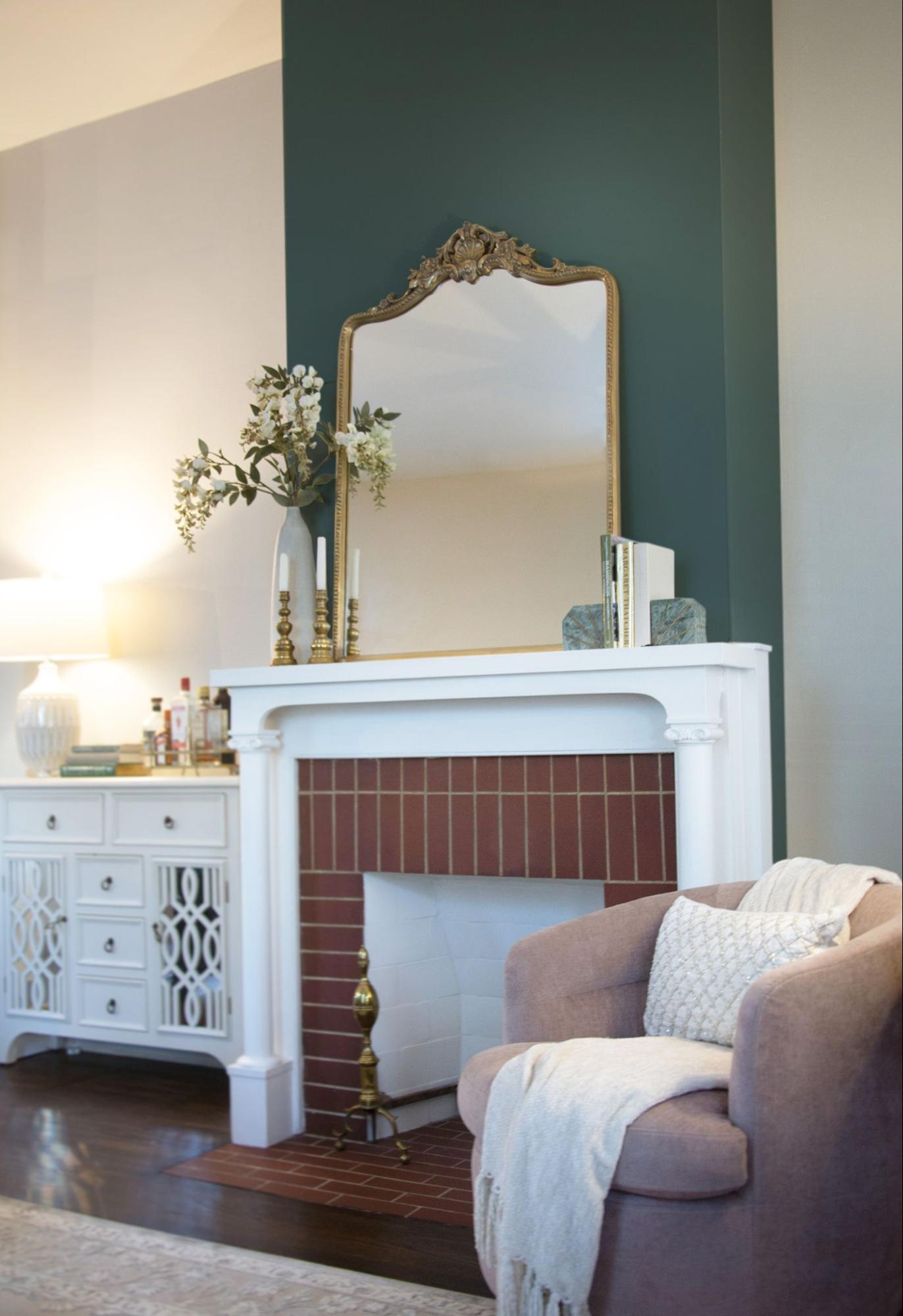
For more helpful tips on selecting the right paint product and finish for your project, check out our Interior Paint Guide.
Of course, choosing paint colors for testing can be confusing - it’s hard to know where to begin! Professional designers start by matching color undertones to furnishings and flooring. Having too many samples to compare causes decision fatigue, making it harder to see the small differences between colors. You can narrow down your samples to a few choices by determining whether the undertones in your existing decor are warm or cool; then choose similar undertones for your samples.
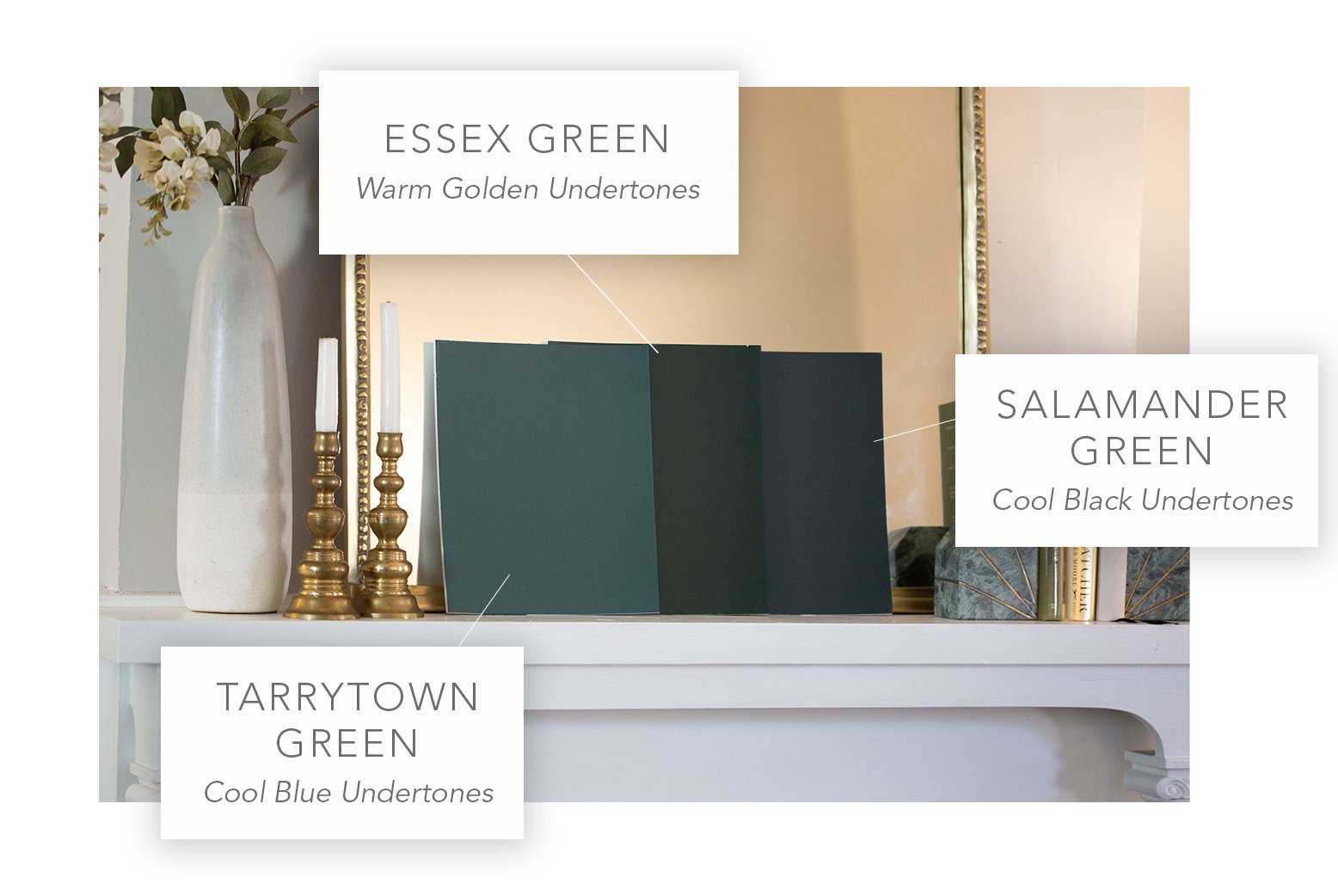
Have you ever noticed how different two shades of white can look when placed side-by-side? The difference is the undertones! If a white shade has a cream-yellow cast it has warm undertones, and if it has a grayish-blue cast it has cool undertones. Undertones are present in every color whether neutral or deep like our jeweled greens.
Checking the undertones helps you coordinate your final color selection with your home’s permanent fixtures:
- flooring
- tile
- cabinet finishes
- countertops
- bath fixtures
- fireplace stone
Undertones are especially important with white or gray paint shades, because a white that is very bright or cool-toned can make existing finishes look dull and yellowed. Wall and trim paint should coordinate with each other and with your existing color palette. For example, if you have beige tile or light wood floors, a warm white like Benjamin Moore Swiss Coffee is a perfect pairing.
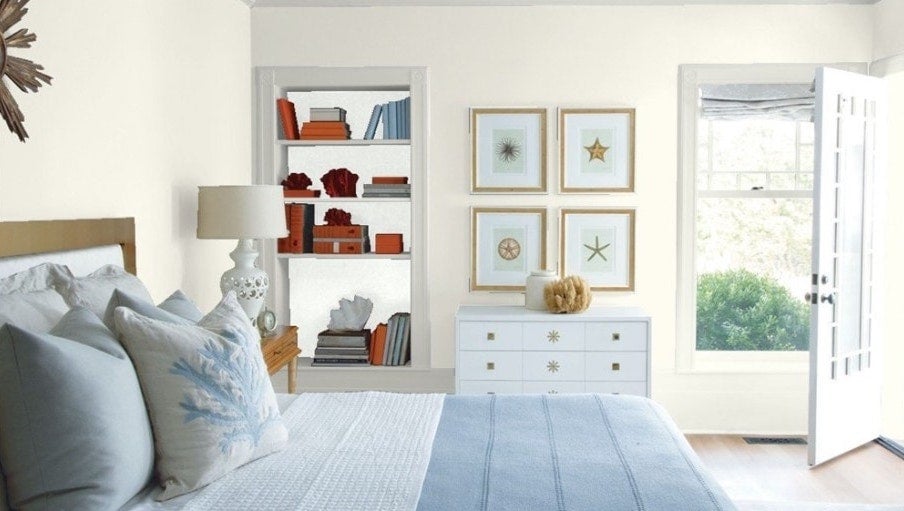
On the other hand, if your interior finishes are gray or cool-toned, look for a slightly cool white like Decorator's White or a bright neutral like Chantilly Lace.
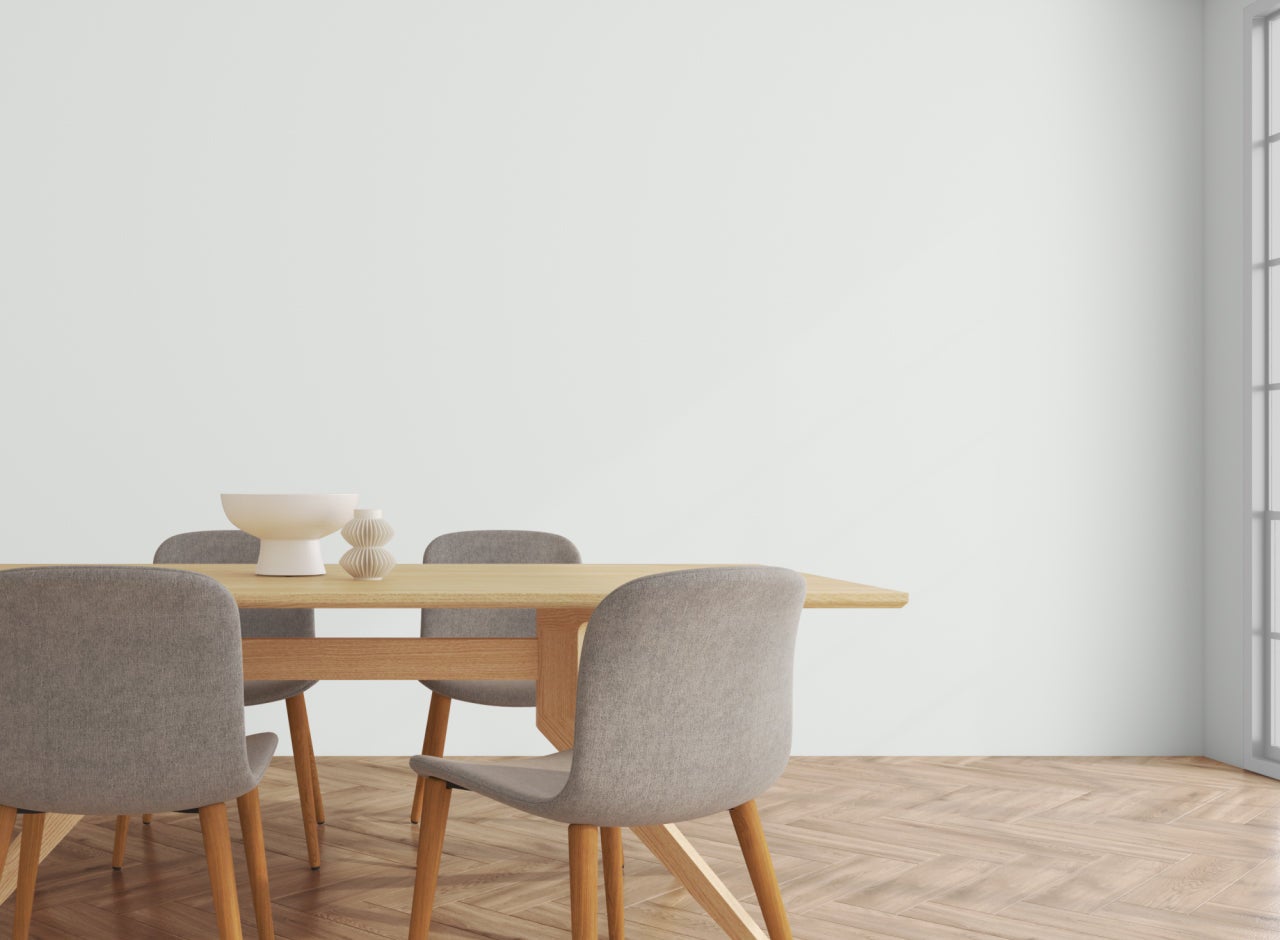
Spend a little time upfront researching color palettes with complementary and companion colors for the colors you’re considering. This will give you some direction in choosing your paint color samples. If you need ideas to get started, you can find inspiration and detailed color reviews for dozens of Benjamin Moore's most popular paint colors in our Colors blog!
Buying Paint Samples Online
Ring’s End carries a wide selection of Benjamin Moore paints in-store and online, shipping anywhere in the U.S in just 2-5 days. You can order paint color samples and Paint Sampling Kits right here on our website. Order four or more samples and get free shipping!

